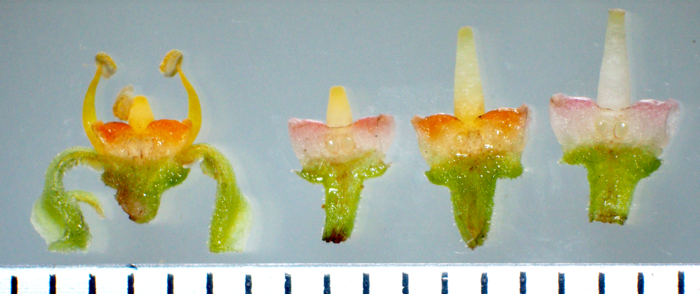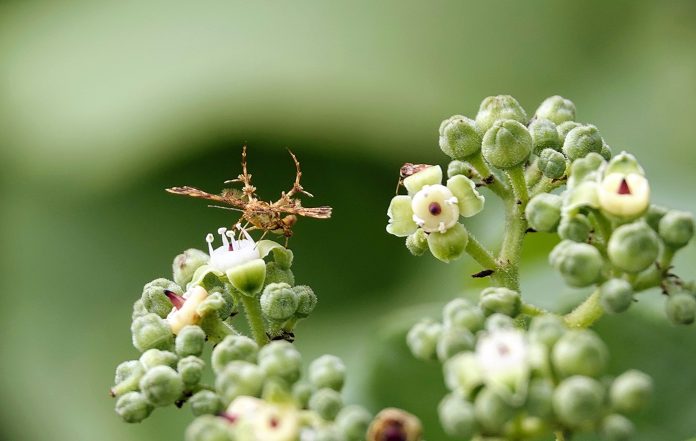A plant common to Japan, Causonis japonica, is the first to show a newly discovered trait: a colour-changing flower
The Causonis japonica’s colour-changing flower is the only known example of bidirectional colour change in the world, says University of Tokyo Professor Hirokazu Tsukaya.
It’s true that many flowers have been shown to change colour depending on their maturation phase, but Causonis japonica is the only known example of bidirectional colour change. Its flowers can change colour depending on the stage of its maturation cycle and then change back to their original colour.
It turns out that the pigments involved in the colours are related to nutrient-rich colourful vegetables, so understanding the colour-changing flower could actually help us to better understand certain nutrient yields in food crops.
Colour-changing flowers – honest or dishonest?
The colour-changing trait has been observed in hundreds of different species for at least a number of decades. It is thought that flowers change the colour of their petals because it sends a signal to pollinating insects that it is time for them to supply nectar or pollen.
This is considered to be an “honest” signal flowers can also give off “dishonest” signals.
For example, some plants show a “dishonest” signal by displaying both their default colour and their signal colour. That behaviour is thought to increase the overall visibility of the plant from a distance to would-be pollinators.
Regardless of the strategy of the plant in question, all examples of colour-changing flowers found have been unidirectional: Once the colour has changed, it does not change back.
The Causonis japonica, however, is different. Tsukaya watched as the plant’s flower changed colour again, and again, and again.

The bidirectional colour-changing flowers were a completely unexpected finding
“Even though I’ve studied this plant in detail, having discovered there were at least two varieties back in 2000, the bidirectional colour-changing flowers were a completely unexpected finding,” said Tsukaya.
“My colleague Professor Nobumitsu Kawakubo from Gifu University is an expert in time-lapse, long-period video recordings of pollinating flowers. He and his student originally tried to explore the pollinating behaviours between the different kinds of Causonis japonica and expected to see the familiar change from its default orange colour to bright pink.
“But they couldn’t believe it when they reviewed the time-lapse video and saw that it not only changed back to orange again, but that this change oscillated between the two states. They informed me on this finding; this compelled us to find out why. So we started a collaboration.”
Carefully capturing time-lapse videos from the field and detailed observations in the laboratory have allowed Tsukaya to connect what physiological changes took place in the flowers concurrent with their changes in colours.
‘The initial orange state is coincident with the male stage of the flower’s maturation’
“The initial orange state is coincident with the male stage of the flower’s maturation, when it is secreting nectar,” adds Tsukaya.
“When the stamen — male part — becomes old and detaches, the flowers turn pink. Mere hours later, the pistil — female part — begins to mature, secretes nectar, and the flower turns orange again. Once that stage is over, the flower fades to pink.
“The main chemical responsible for the color changing is orange-yellow carotenoid; its cycle of accumulation and degradation is also the fastest known to date. That fact was another surprise to us.”
What’s next for colour-changing flowers?
Tsukaya explains: “Our next steps will be to find out what is governing the behaviours we have observed.”
‘One big question we have is, at what level are the stages of the cycles regulated?’
“One big question we have is, at what level are the stages of the cycles regulated? Is it caused by proteins caught in a feedback cycle, or does something occur on a genetic level?
“We will continue to explore this and hope to find an explanation soon. It’s strange to think that several hundred years ago, agriculturalists in Japan hated Causonis japonica because of its vigorous nature. But a novelist, Kyoka Izumi, wrote about them so favourably, I wonder if it helped maintain some interest in preserving them. Whatever the reason, I’m glad they are around now to share their secrets with us. I wonder what we’ll discover next.”











